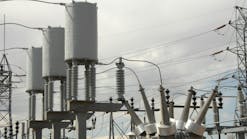According to the Advanced Energy Now 2019 Market Report, the market for electricity delivery and management, which includes advanced transmission and distribution products and services, recorded the highest compound annual growth rate (CAGR) in the period 2011 to 2018 worldwide (18%). In the United States, CAGR was a healthy 11% over that time. The year 2017 was one of the biggest for electricity delivery and management, recording 28% growth globally and 14% in the United States. While the market plateaued somewhat in 2018, with global growth at 6% and a slight decline in U.S. revenue, electricity delivery and management products will continue to receive significant investment in the coming decade.
Total revenue in this market is primarily driven by large-scale transmission infrastructure and the enabling information and communications technology (ICT) that supports grid management. These areas are both mature but growing strongly in recent years. There are many drivers for this growth. For example, grid-scale renewables require investment in transmission systems to transport power from remote locations to the point of consumption.
At US$55.4 billion worldwide, transmission is the largest subsegment of electricity delivery and management. When markets are this big, it is not unreasonable to expect slow, steady growth. As transmission projects often involve large investments, it is also not unusual to see big year-to-year swings, as we saw between 2011 and 2014. But overall, global growth has been impressive, with 18% CAGR over the seven-year period with particularly big years in 2017 and 2018.
Global revenue from advanced transmission technologies — which include smart transmission system upgrades, high-voltage direct-current (HVDC) transmission installations, and submarine transmission systems — grew 7% from 2017 to 2018, reaching US$55.4 billion, following a 44% growth the year before. Enabling ICT — which includes a variety of smart grid hardware and software products — also shows a revenue increase of 7%, to US$43.7 billion in 2018, after a 12% growth in 2017.
In the United States, CAGR for electricity delivery and management technologies has been lower than global growth over this period. Still, 11% CAGR for U.S. electricity delivery and management overall is a strong figure. The U.S. market for these goods and services is growing; other markets are just growing faster.
U.S. revenue for advanced transmission technologies declined 7% in 2018, to US$6.8 billion, after a 7% increase the year before. The decline came in smart transmission system upgrades, which dropped 17%, to US$3.4 billion. HVDC transmission revenue grew a modest 4%, to US$3.1 billion, following a big year in 2017, when revenue jumped 42%. U.S. revenue from enabling ICT rose 5% in 2018, to US$8.2 billion, following a 9% growth the year before.
Energy policy in most countries is set at a federal level, and in the case of Europe, can be significantly affected by the supranational policies of the European Union (EU), which is investing aggressively in energy transition. In the United States, most energy policy is made at a state level. Across the 50 states there are widely different approaches to each, with a handful of states, including California, New York, and Hawaii, blazing an ambitious trail with respect to overall advanced energy deployment and regulatory transformation. Still, considering the infrastructure investments being made in emerging markets like India and China, it is no surprise that the United States, while still an attractive market, is growing less rapidly.


